
14 minute read
INCLUSION FOR KENTUCKY KIDS
from Equine Science Review: highlighting research and outreach efforts at the University of Kentucky
UK’S KATHY SHEPPARD-JONES PUBLISHES BOOK HIGHLIGHTING DIVERSITY AND INCLUSION FOR KENTUCKY KIDS
University of Kentucky Human Development Institute (HDI) Executive Director Kathy Sheppard-Jones has turned her personal experiences into a learning opportunity for Kentucky kids. Sheppard-Jones has published "You Can Do So Many Things!" — a book for young children that highlights diversity and inclusion in the workforce. "There are a lot of messages in the book about opportunity. We tried to include themes about work and diversity of life experience," Sheppard-Jones said. "We want families and children at a very young age to think of the world as theirs to explore, and that there are many paths and possibilities for everyone." Through the book, children can follow along with the main character, Flynn, who has a mobility impairment. She explores various places related to the horse industry in Lexington, Kentucky. The book introduces its readers to the world of horses and possibilities for young children as they consider future work opportunities. "You Can Do So Many Things!" celebrates the horse industry in Kentucky’s Bluegrass and the many possibilities for employment. Given that 1 in 3 Kentuckians experiences disability, and people with disabilities face employment barriers, this book also offers a different approach to understanding disability.
Advertisement
HDI EXECUTIVE DIRECTOR KATHY SHEPPARD-JONES TURNED HER PERSONAL EXPERIENCES INTO A LEARNING OPPORTUNITY FOR KENTUCKY'S KIDS. It is written for young readers, to encourage them — starting at very young ages — to think broadly about possible work in the horse industry. Over a dozen different career paths are highlighted in the book, as well as all different kinds of disabil- ities and different horse breeds. "You Can Do So Many Things!" also highlights local employ- ers including the University of Kentucky, Kentucky Horse Park, Keeneland and Hallway Feeds. "I was the horse crazy child growing up who was told my disability would not allow me to do what I wanted to do," Sheppard-Jones said. "So, I dedicated my life to help people with disabilities get jobs. I got to share my love of Lexington, horses and connecting people with real work. The book is my love letter to Lexington and the opportunities here." The book is currently available as an accessible online PDF that includes an audio reading of the book, to allow different ways for kids to interact with the literature. Soft and hard cover copies will be available through the HDI online bookstore, and
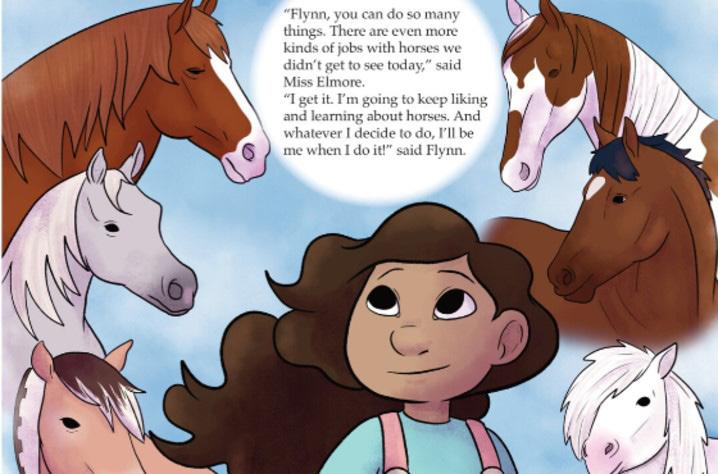
copies will be provided to child care centers around the state. "We want to make this book ac- cessible and available to children throughout Kentucky," Shep- pard-Jones said. "Ultimately, we want children and families to have high expectations and to be think- ing about the future. Work matters. I want to broaden peoples’ under- standing of what is possible. Once you find the spark you can hone in on what aspects of a particular career path is most appealing. "A special thank you to my ed- itor, Caroline Gooden (an adjunct faculty member in UK College of Education), and illustrator, Brittany Granville. Brittany’s talents really brought the book to life. The style and warmth of the images help the story gallop across the pages." Development of the book project and the first set of books was supported through UK HDI’s Fund for Excellence.
| Meg Mills is a member of the University of Kentucky PR and Marketing news bureau staff. Source: UK Now, Aug. 3, 2020.
IF YOU BUILD IT, WILL THEY COME?
UNDERGRAD RESEARCH PROJECT STUDIES HORSES’ INCLINATION TO SEEK SHADE AT CERTAIN TEMPERATURES
When COVID-19 upended her internship plans, Lauren Underwood, undergraduate equine senior at the University of Kentucky, abruptly changed her focus and instead took an independent research project on the road to Texas. Working under Camie Heleski, senior lecturer within the equine undergraduate degree program, Underwood began a quest to learn more about horses’ desire for shade when temperatures go higher than 85 degrees Fahrenheit and in the process not only fulfilled her internship requirement, but also discovered a passion for research. With Heleski’s help, a new door was opened for Underwood in research in her home state of Texas. During her project, Underwood visited 126 farms and observed the 1,099 horses that lived on those farms. She recorded the behavior of the horses during varying temperatures. She was most interested in learning if they would seek shade in temperatures over 85 degrees Fahrenheit. Heleski had previously conducted this research in primarily northern states, but never as far south as Texas, where the heat index is substantially higher. Underwood was interested in replicating Heleski’s research in Texas. Over the course of her project, Underwood visited nine different counties in northern Texas and drove more than 3,000 miles. In that time, she captured 276 behavioral observations in her data collection sheet. Underwood found, in conjunction with Heleski’s earlier work, that the driving force behind hors
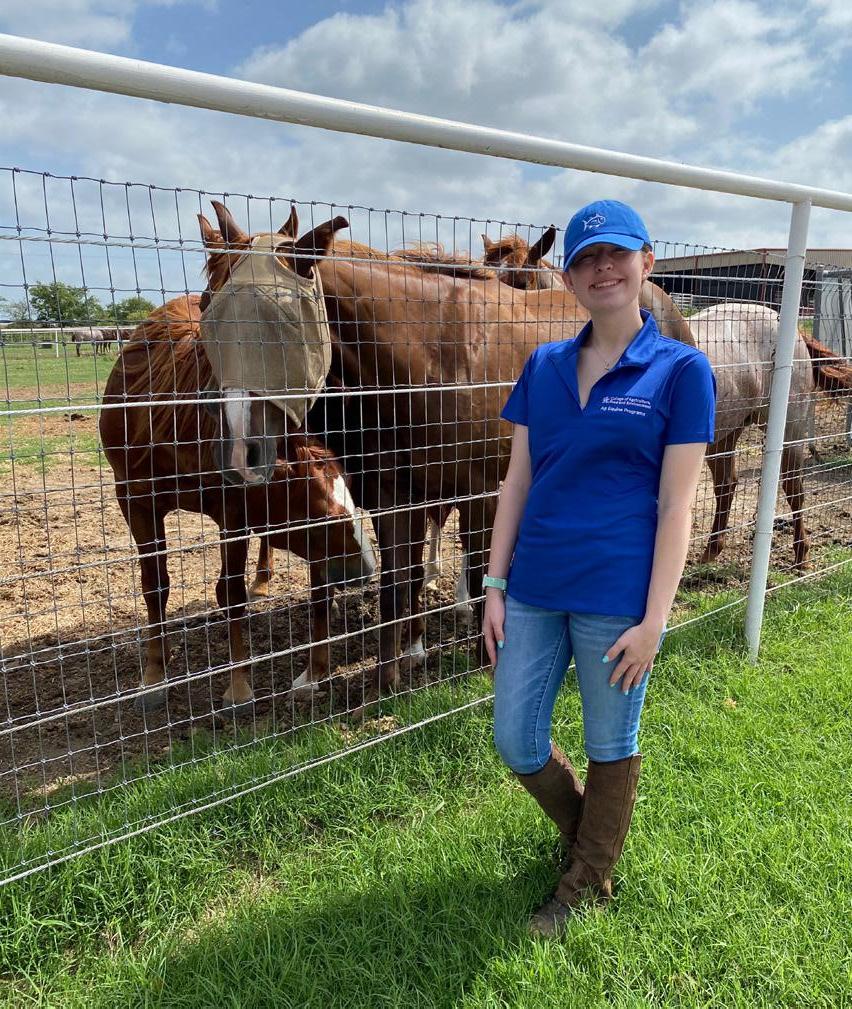
es seeking shade has to do with the UV Index’s effect on the particular horse in question. She determined that horses seek shade according to the “feelslike” temperature instead of the actual recorded temperature one might see on a weather app. “I had the wonderfully good fortune to work with Lauren this summer on this project,” Heleski said. “The hypothesis at the outset was that as POSING WITH MARES FROM SDP BUFFALO RANCH, FORT WORTH, temperatures increase TEXAS. PHOTO COURTESY LAUREN UNDERWOOD. above 85 degrees Fahrenheit, horses will have an increasing motivation to seek shade, whether from trees or human made shelters. “Though more careful statistical analysis is still needed, it did appear that as temperatures increased, a higher percentages of horses would seek shade. This was especially true on bright sunshine/ high UV days,” Heleski said. ‘feels like’ temperature is the same temperature in shade. Shelters do however, provide cover to block out sunrays from burning skin or bleaching out their coats,” Underwood said. According to Underwood, the opportunity to conduct research as an undergraduate was an amazing experience, and one that set her future course. Underwood also noted that when horses had a choice, most would seek out shade from trees more often than shade from human made shelters. Herd dynamics appeared to play an important role in when a given group of horses might move toward shade seeking. “Shade inside the shelter or under trees may not be any cooler than in full sunlight, because the “I feel like people go on to graduate school and haven’t experienced this,” she said. “So if you wait to figure out that, ‘Oh this isn’t for me,’ then you’ve already wasted money and time on it. If you’ve never done it, you just don’t know. And then if you have done it, you can say, ‘Okay this is like a vegetable, do I like it or do I not?’ and then you can decide whether to pursue it further. It
Equine Shade Seeking Behaviors at Temperatures of 85F or Higher Lauren Underwood College of Ag Food and Environment, Equine Science and Management University of Kentucky, Lexington, KY
Description of Responsibilities and Activities
Time management and organization is the key to be successful as an intern.
EQM 399:
• Turn in assignments on time and meet deadlines. • Sign COVID-19 contract. • Log hours performed on Canvas. • Prepare poster for showcase.
Dr. Heleski:
For my research project I had weekly check-ins via email and Zoom to submit my data thus far and discuss any issues or discoveries that I observed. • Created a spreadsheet of study site locations: 126 farms/ranches in 9 counties in North Texas visited. • Developed a methodology for the study. • Monitored weather temperatures for the days over 85F and above. Used iPhone weather App and tv weather broadcasts to determine time of arrival and where to go to make observations. • Mapped out driving route using MapQuest. 3,104 miles traveled on 19 observation days. • Collected data observations. Used of data collection sheet and used iPhone to take pictures. Met with barn owners to stay longer on the property. Recorded 276 daily observations onto master spreadsheet. • Organized the data. Created data tables and graphs to quantify findings. • Analyze Data and findings into a PPT presentation. • Make final presentation to share research learnings and insights.
Abstract
This semester I had the pleasure to collaborate with Dr. Camie Heleski on a remote internship research study examining how equine seek shade when temperatures are 85F degrees or higher. Previous studies did not examine equine shade seeking behaviors at temperatures above 85F degrees. And none to date, have been conducted in the state of Texas. In total, I visited 126 farms/ranches within 9 Texas counties, and drove 3,104 miles to document 1,099 horses and 46 livestock species as they sought shade. To collect the data, I made drive by visits to several farms in the North Texas area where I observed horses in their pastures as they sought shade under human-made shelters or natural shelters such as trees. At each place I recorded the temperature, wind speed, humidity, UV index, feels like temperature, and took note if the horses were harassed by flies.
A total of 276 observations were made during the study period of May 27- July 10, 2020.
Findings suggest that equine do indeed seek shade when the “feels like” temperature is above 85F, regardless of the actual temperature. In fact, data suggests that at temperatures of 93F, horses sought shade 60% of the time, and 100% of the time when the actual temperature was 96F or higher. When the “feels like” temperature is 90F or higher, horses sought shade 100% of the time even though the actual temperature was only 88F. Horses seek shade primarily under trees or shelters. This information will be beneficial to improve the general welfare of horses. To learn more about my research process: Click below to access the PPT summary of my study and research.
Evaluation of EQM Courses
EQM 340 Facility and Design
In this course Dr. Coleman discussed the key design concepts required to build a barn or facility. I learned how to create the business proposal and construct plans for my “future” barn that I will build one day. In his class I gained new skills and now I understand to the difference between various “shelters” in the pasture.
VS 307 Horse Genetics
Dr. Bailey taught the different attributes of genetics for horses: colors, confirmation, bloodlines, modifications, etc. In his class I really learned the genetic code to be able to determine color of horses for data collection.
EQM 305 Equine Industry Issues
In Dr. Heleski’s class I really got exposure to different industry disciplines and the way of life in their eyes. I felt that from this class alone, I gained the confidence to be able to talk to different farms about their protocols and still represent the University of Kentucky with professionalism.
Even Gerald the Giraffe one of the 46 other livestock species Professional Growth Goals
Create an outline of what is necessary to do a research internship by May 2020
Strategies: Communicate with Dr. Heleski via Zoom or email periodically to receive help, mentoring, and provide feedback. Develop and implement a routine to follow for independent research. Gather any useful tools, books, to help with the research.
Provide a portfolio of the research collection thus far by August 2020
Strategies: Start laying out the excel sheets and research papers provided by Dr.
Heleski and then put together a small synopsis to be used as a tool for Dr. Heleski’s study.
Gradually take the experience and knowledge to future endeavors in the Equine Industry by December 2020
Strategies: Graduate from the University of Kentucky with a Bachelors degree. Take the knowledge and skills from this research study to help further my endeavors in Grad
School.
Professional Growth Outcomes
Contribute findings to Dr. Heleski’s Equine Shade Seeking Behavior research study and publication as an Undergraduate.
• My goal this Fall, is to remain on the research study and to participate in the abstract virtual conference. • As a result of my internship accomplishments, I applied for a Teaching Assistant (TA) position to be the TA for Dr. Heleski’s EQM 305 class in the Fall.
Apply for admission to Graduate School with a concentration in Horse Genetics research.
• Identified nine grad school possibilities. Reach out to professors from those schools who may have openings in their research program and discuss prerequisite requirements. • My research experience on the Shade Seeking Behavior study and working as a TA will make my application more competitive. • Study for the GRE test so that I can score phenomenally well on the exam. Secure my spot in the Animal Science Graduate Program.
Graduate from the University of Kentucky with a Bachelor of Science in Equine Science and Management degree Fall 2020.
• Enter Graduate school in Spring 2021!
helps to know that you are being a mini-scientist. When it’s something you’re interested and you care about, it makes a difference.” She said she felt that it can be intimidating for students to travel this path because of the sheer amount of people they have to put themselves in front of. Underwood said she got through this initial fear with a quote from the 2011 film, We Bought A Zoo, “You know, sometimes all you need is 20 seconds of insane courage, just literally 20 seconds of embarrassing bravery, and I promise you something great will come of it. “When I was pulling up to these farms, I think it’s always intimidating meeting someone you have never met before. I would just tell myself, ‘I have 20 seconds, like 10 to open the door and 10 to start talking,’ and that would help me get through it.” For Underwood, the research she did opened up new doors for
Posing with Corey from Buffalo Ranch
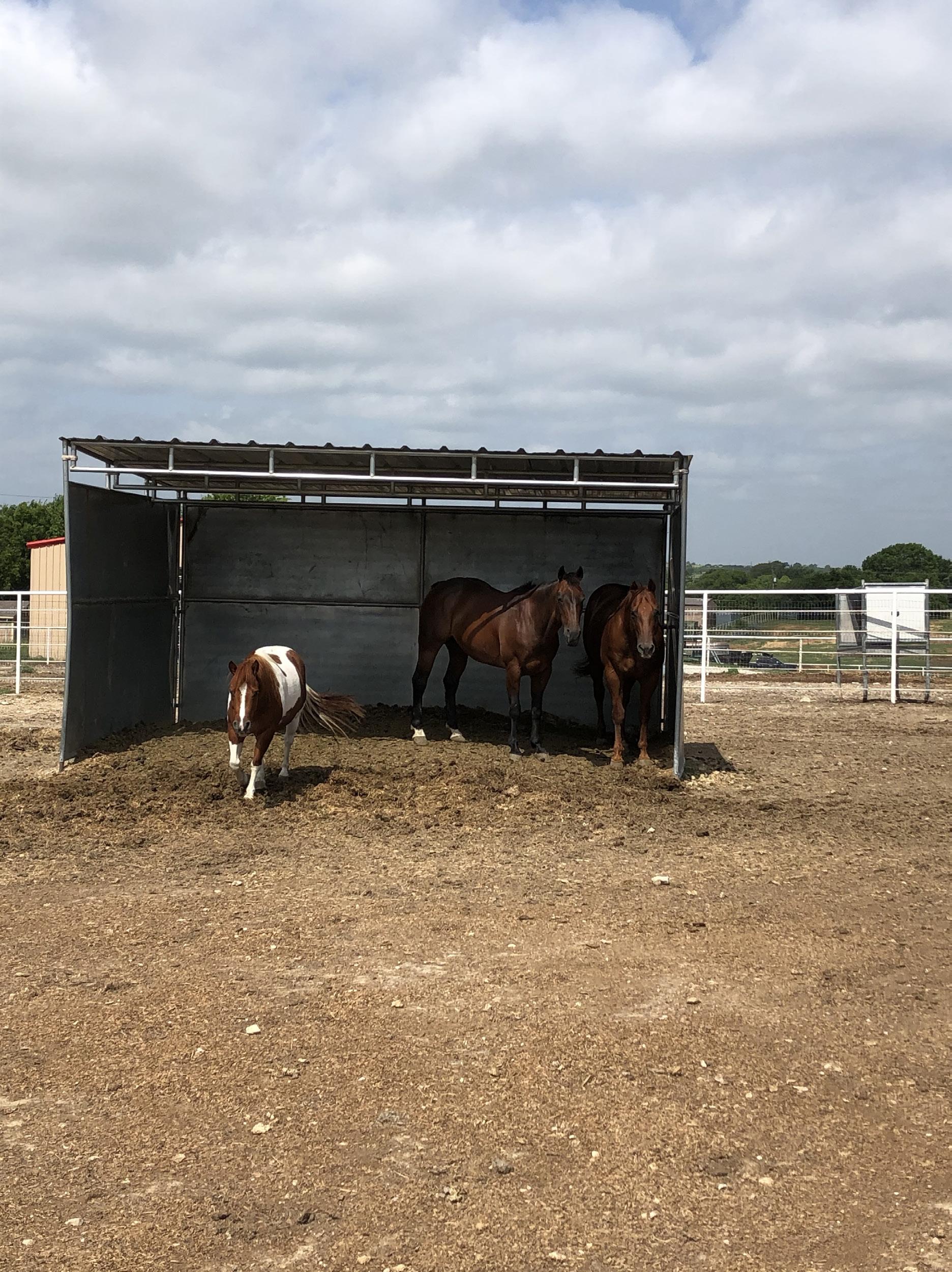
Posing with Dr. Melanie from Alpha Equine
Posing with Mrs. Aisha from Weatherford Equine Breeding
Project Development
How the Remote Study was conducted: Mapped out the Plan of Action
• Where to go? Who to see? How to monitor the weather?
Interning during COVID-19 Considerations
• Several farms closed their gates or had limited access. • Masks are REQUIRED at several farms.
Multitask (Safely)
• Be able to record data in collective sheets and able to drive safely. Several times having to pullover to record data and drive again. Used camera phone to document observations.
Organize the Data
• Created a data spreadsheet. • Created spreadsheet of collection sites (listing of facilities.) • Created data worksheets: Feels Like Temp. UV index, Wind speed, and Humidity
Utilize Available Resources/Supplies for Research
• Communicate using shared resources to faculty: Zoom Calls, Email, One Drive. • Strong Excel/Statistics skills (AEC 302 and STA 210) • Camera Phone provided time stamp of location (Apple IOS) • Equine Tapestry by Lesli Kathman to identify colors. • Map Quest for Routes: AM/PM Temperatures to decide plan of action. • Driving- Make Appointments for Farms
Behave as UKY Ambassador
• Have experience with horses and livestock. • Build Network Connections. • Job/Future Internship Possibilities. • Create Reputable Relationships with several Equine Industry Ranchers.
Acknowledgements
Special thanks to following farms in North Texas:
Alpha Equine Granbury, TX SDP Buffalo Ranch Fort Worth, TX Iron Horse Ranch Granbury, TX Weatherford Equine Breeding and Medicine Weatherford, TX
Special thanks to the Following Professors at the University of Kentucky: Dr. Earnest Bailey: On the first day of class always having a smile in lectures even when the topics became tricky. Giving horse genetics a whole new light which inspired my future interest to pursue in Grad School. Dr. Bob Coleman: Opening my eyes to different parts of the Equine Industry in Tools and Tack class. Materializing the business plan for my future farm from the EQM 340 Facility and Design class. Dr. Camie Heleski: Giving me the opportunity of a lifetime to conduct a research study as an Intern. Dr. Mary Rossano: Starting from the very beginning as your advisee, you encouraged me to follow the pathway to success and to pursue my future endeavors. Always giving me the resources and personal knowledge to realize my dreams!
UNDERWOOD’S INTERNSHIP POSTER FROM HER PROJECT. COURTESY LAUREN UNDERWOOD.
her and let her explore what she wanted to do after she graduates this fall. Her undergraduate research with Heleski will continue during the fall semester and she is excited with the newfound option of pursing research as a future career. Her suggestion for students interested in undergraduate research? “Go for it my friends!”
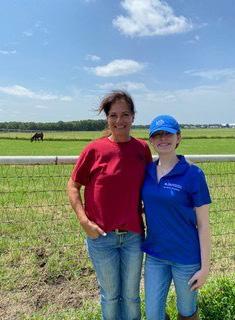
| Sabrina Jacobs, a senior majoring in equine science and management and minoring in wildlife biology and management, is a communications and student relations intern with UK Ag Equine Programs.
UNDERWOOD POSES WITH DR. MELANIE RITTER, ALPHA EQUINE, GRANBURY, TEXAS. PHOTO COURTESY LAUREN UNDERWOOD.
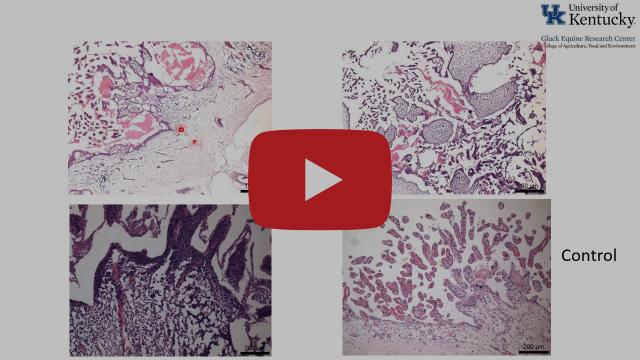
UK IN THE NEWS
Can Diet Make a Horse ‘Crazy’?
Drs. Jenny Biehunko and Camie Heleski touch on how nutrition might or might not affect horse behavior. From learning theory and counterconditioning to supplements and pharmaceutical options, we’ll take a look at ways to safely help nervous, high-strung, and energetic horses relax. Listen to the full recording here.
Source: The Horse.com, July 26, 2020
Horse Trainer or Behaviorist: What’s the Difference?
Drs. Camie Heleski and Jenny Biehunko explain the differences between a horse trainer, an animal behaviorist and a veterinary behaviorist. Listen to the full recording here.
Source: The Horse.com, July 23, 2020




